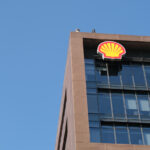From S&P Global Platts
Moscow — Russian LNG is well positioned to compete with North American projects to reach new markets in Asia and the Atlantic Basin despite the challenges, a Shell executive said Wednesday at the LNG Congress in Moscow.
Russian LNG can offer at least three location options, Shell’s Senior Deal Lead Stuart Bradford said.
He pointed to the Far East, with the planned capacity expansion at the Sakhalin plant, the Arctic with Yamal LNG and Arctic LNG 2 projects led by Russian Novatek, and the Baltic coast, with the Baltic LNG project.
But Russia is facing a challenge from North America as capital expenditure is generally lower over there. “Projects are built in a mature market,” he said. North American projects also benefit from special partnerships, supported by a low-tax regime.
Finally, the commercial arrangements in North America are implemented on “basis risks,” with gas prices based on the well-established Henry Hub. Bradford said that competition is healthy: “Shell is convinced that Russia LNG can commit to these challenges.” The company is currently involved in two Russian LNG projects: Baltic LNG and Sakhalin-2.
The Baltic LNG project should result in the construction of a 10 million mt a year LNG plant near the port of Ust-Luga in Russia’s northern Leningrad region, with potential to increase capacity to 15 million mt/year. The plant will receive feedgas from West Siberian gas fields via the Northern Lights pipeline system. The capital expenditure is expected to be slightly above $11 billion. The partners are Russian Gazprom and Shell. The target markets for the project include countries in the Atlantic Basin, Middle East, and South Asia, as well as small-scale LNG markets in the areas of the Baltic and North Seas. The commissioning is expected in 2023, although the timeframe could be delayed by a protracted preliminary stage.
The Sakhalin 2 terminal currently has two trains, with a total capacity of 9.6 million mt/year in Sakhalin Island in Russian Far East, although LNG production was 11.49 million mt in 2017. The two main partners, Gazprom and Shell, are planning to build a 5.4 million mt/year third train which will bring the total capacity of the project to 15 million mt/year. The feedgas is from the Piltun-Astokhskoye and Lunskoye oil and gas fields, which have about 5.097 Tcm (180 Tcf) of gas reserves. The capital expenditure on the expansion is expected to be $5 billion-$6 billion. There are four shareholders: Shell 27.5% (minus one share), Gazprom 50% (plus one share), Mitsui 12.5%, and Mitsubishi 10%. All the gas from the installed capacity at Sakhalin-2 has been sold under long-term contracts to customers in the Asia-Pacific region and North America, while additional production will be sold on a spot basis. Sakhalin-2 supplies about 4% of the world’s current LNG market according to Shell.







